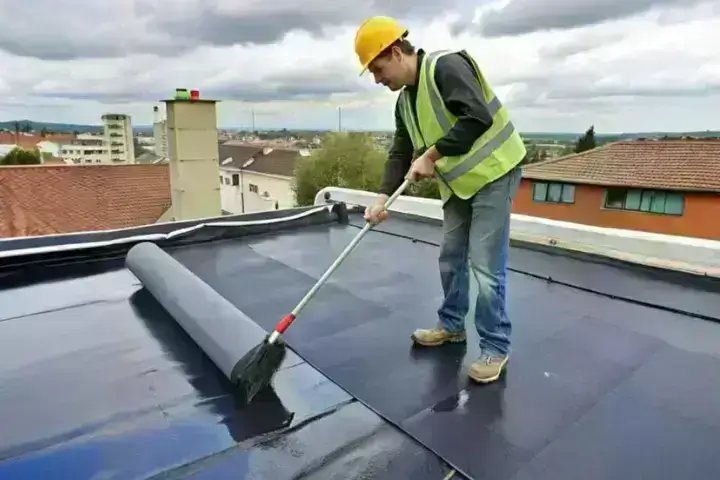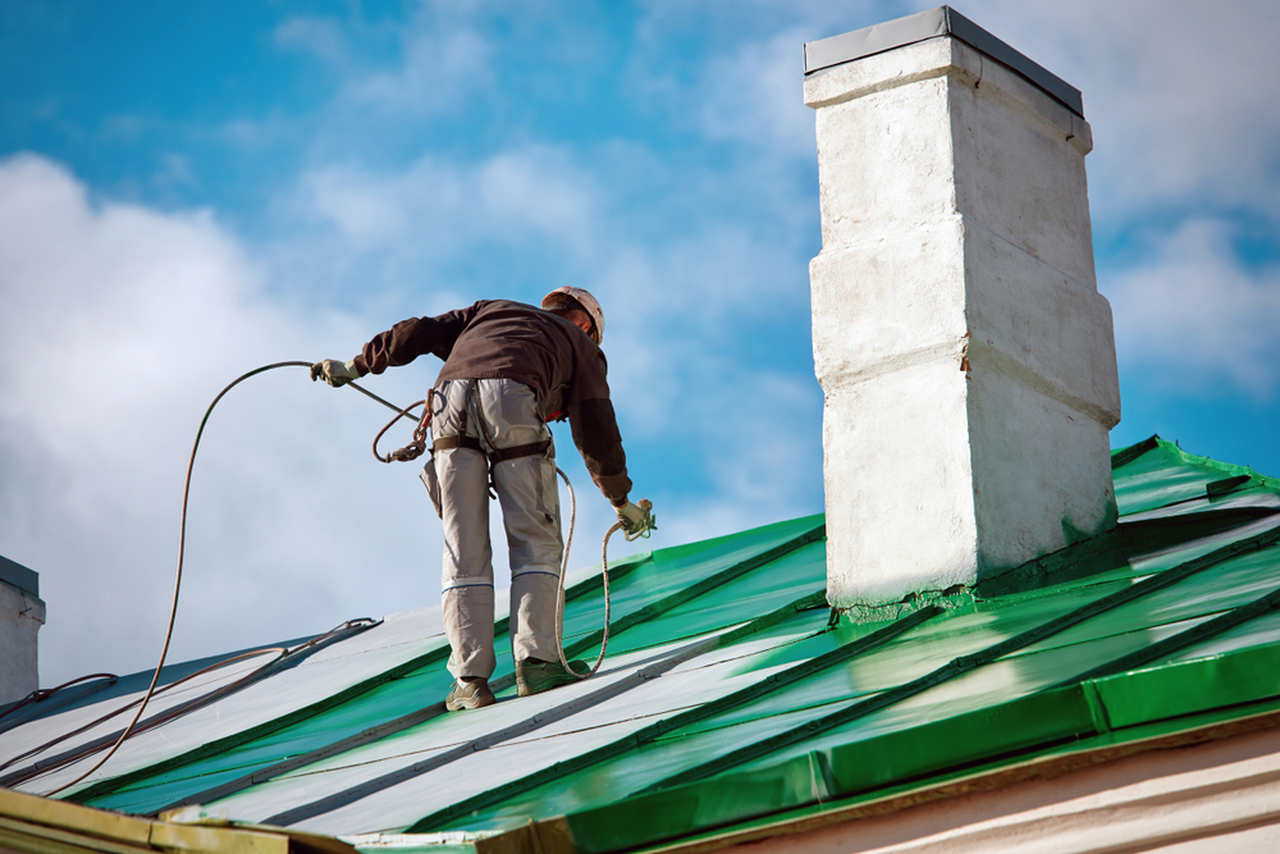Exactly How Waterproofing Works: A Detailed Check Out Strategies and Technologies
Waterproofing is essential for shielding structures from moisture-related damage. It includes various techniques and modern technologies that produce barriers versus water invasion. Standard methods, such as compressed clay, coexist with modern advancements like liquid-applied membranes. Comprehending the subtleties of these strategies is important for reliable application. The efficiency of any type of waterproofing remedy hinges not only on the methods utilized yet additionally on ongoing maintenance and evaluation. What are the crucial variables that influence long-term performance?
Comprehending the Fundamentals of Waterproofing
Waterproofing is an essential process that secures frameworks from water invasion, which can bring about substantial damages over time. This method includes the application of different products and strategies developed to develop a barrier against wetness. The main objective is to stop water from permeating surface areas, which can create degeneration, mold and mildew growth, and structural instability.Various variables affect the selection of waterproofing approach, consisting of the type of framework, its location, and ecological problems. Comprehending the physics of water motion and the residential or commercial properties of different materials is critical in selecting a reliable waterproofing solution.Effective waterproofing not just safeguards structures however likewise improves their durability and stability. Commonly, it is integrated into the layout phase of building to guarantee detailed security. As awareness of water-related problems grows, the significance of comprehending waterproofing fundamentals becomes progressively clear to designers, contractors, and homeowner alike.
Conventional Waterproofing Approaches
Typical waterproofing techniques have actually been made use of for centuries, counting on tried and true strategies and products to guard structures from water damage. One of the earliest approaches involves the usage of clay, which, when compressed, develops an all-natural obstacle against dampness. Additionally, asphalt, a sticky, black product stemmed from petroleum, has actually been used for its water-resistant properties, frequently put on roof coverings and foundations.Another method includes the application of lime-based plasters, which supply a breathable layer that permits dampness to get away while protecting against water ingress. Thatch roof covering, a traditional approach still seen in some societies, provides superb waterproofing due to its snugly loaded straw layers.Moreover, the use of rock and block has projected, as these materials are naturally resistant to water when correctly installed. In general, conventional waterproofing techniques stress the significance of choosing ideal materials and building practices to boost resilience against water breach.
Modern Waterproofing Technologies
Improvements in modern-day waterproofing innovations have actually transformed the means structures are safeguarded from water damages. Innovative techniques such as liquid-applied membranes and innovative sealers have actually enhanced the effectiveness and convenience of waterproofing services. These technologies enable smooth application, reducing the threat of leaks and ensuring extensive insurance coverage over complex surfaces.Moreover, the assimilation of clever innovations, such as moisture sensors and automated surveillance systems, makes it possible for real-time evaluation of waterproofing performance. This proactive technique facilitates prompt maintenance and lowers lasting fixing costs.Additionally, advancements in spray-applied coverings provide quick application and outstanding attachment, adapting to different substratums while giving durable defense. Methods like polymer-modified systems even more boost flexibility and longevity, making them ideal for varied atmospheres. In general, contemporary waterproofing innovations not only mitigate water breach however likewise add to the long life and sustainability of frameworks, noting a substantial change in the industry.
Materials Utilized in Waterproofing
The performance of waterproofing solutions greatly counts on the materials made use of in their application. Various materials are employed to produce barriers versus water ingress, each with special residential properties suited for various environments. Typically made use of materials consist of membrane layers, coverings, and sealants.Liquid-applied membranes, often made from polyurethane or acrylic, form a seamless obstacle that adapts to intricate surface areas. Sheet webpage membrane layers, normally constructed from rubber or polycarbonate, deal longevity and are optimal for larger locations. Additionally, cementitious waterproofing products, made up of cementitious substances, offer superb bond and flexibility.Sealants made from silicone or polyurethane are important for joints and joints, guaranteeing complete protection. Sophisticated products, such as geo-composite membrane layers, integrate several features, boosting efficiency. In general, the selection of waterproofing products is important in accomplishing durable and efficient water resistance, customized to details job needs and ecological problems.
Usual Applications of Waterproofing
Waterproofing plays an essential function in different sectors, making certain the longevity and stability of structures. Typical applications consist of property services that protect homes, business facilities that safeguards companies, and industrial setups that call for durable security versus wetness. Recognizing these applications highlights the importance of waterproofing in keeping both safety and security and performance across various environments.
Residential Waterproofing Solutions
Lots of property owners face challenges with dampness invasion, making efficient residential waterproofing solutions essential. Different methods exist to resolve this problem, including inside and outside waterproofing systems. Interior remedies usually include the application of sealants and layers to basement walls, which aid avoid water seepage. Outside methods typically include the installment of water drainage systems and water resistant membranes that draw away water away from the foundation.Additionally, home owners might consider sump pumps to get rid of water build-up and dehumidifiers to regulate humidity levels. Correct grading and using gutters also play an essential function in handling water flow around the home. By implementing these strategies, homeowners can substantially decrease the threat of water damages and mold and mildew growth, making sure a completely dry and risk-free living setting.

Commercial Facilities Protection
Reliable waterproofing their website services play a vital role in the defense of industrial facilities. Drainage & waterproofing company Omaha. These techniques are essential for guarding buildings, car park structures, and bridges from water damage, which can compromise architectural integrity and result in costly fixings. Typical applications consist of the installation of membrane layers, coverings, and sealants that produce obstacles versus moisture seepage. Areas such as basements, roof coverings, and outside wall surfaces are often focused on to ensure long life and toughness. In addition, waterproofing systems can boost energy effectiveness by protecting against water-related problems that may result in mold and mildew development and degeneration. By carrying out durable waterproofing steps, homeowner can secure their financial investments and maintain functional efficiency, eventually adding to the overall sustainability of industrial centers
Industrial Applications Review
While various fields deal with special difficulties, the need for trustworthy waterproofing remedies continues to be a constant in commercial applications. Industries such as manufacturing, building and construction, and power typically run into environments where moisture direct exposure can threaten structural stability and functional efficiency. In producing centers, waterproofing is vital for protecting machinery and products from water damage. In building and construction, it safeguards foundations and basements versus groundwater infiltration. The energy market depends on waterproofing for the protection of tools in hydroelectric plants and overseas frameworks. Furthermore, food handling sectors make use of waterproofing to guarantee hygiene and conformity with security requirements. On the whole, effective waterproofing solutions are crucial for enhancing resilience, safety, and performance throughout various commercial setups.
Maintenance and Long Life of Waterproofing Solutions
Waterproofing services are created to use long-lasting defense versus dampness intrusion, normal maintenance is necessary to guarantee their performance and longevity. Routine assessments play a significant function in identifying prospective issues such as fractures, peeling off, or indicators of water damage. Resolving these issues quickly can protect against more damage and expensive repairs.Additionally, cleaning up the surface area of waterproof locations assists eliminate dirt and particles that can endanger the advice stability of the waterproofing barrier. It's additionally a good idea to reapply protective layers or sealants as suggested by manufacturers to maintain perfect performance. Environmental variables, such as UV direct exposure and severe weather condition problems, can affect the lifespan of waterproofing products, making normal analysis essential
Frequently Asked Inquiries
Can Waterproofing Be Applied in Cold Climate?
The question of applying waterproofing in cold climate raises concerns concerning bond and treating. Lots of products might not carry out at their ideal in low temperatures, requiring cautious selection and factor to consider of details standards for reliable application.
How Long Does Waterproofing Generally Last?
The duration of waterproofing efficiency varies based upon materials and environmental variables. Generally, it can last from 5 to 10 years, yet normal maintenance and examinations are vital to assure peak efficiency and durability.
Is DIY Waterproofing Effective and Safe?
The performance and safety of DIY waterproofing depend on various aspects, consisting of worldly top quality and application method. While some individuals accomplish acceptable results, others may encounter problems that endanger lasting security and structural stability.
What Are the Indications of Failing Waterproofing?
Indications of falling short waterproofing consist of visible water spots, peeling paint, mold and mildew growth, mildewy smells, and moisture in wall surfaces or ceilings - Drainage & waterproofing company Omaha. These signs suggest compromised barriers, requiring punctual inspection and prospective removal to stop additional damage
How Do I Select the Right Waterproofing Contractor?
